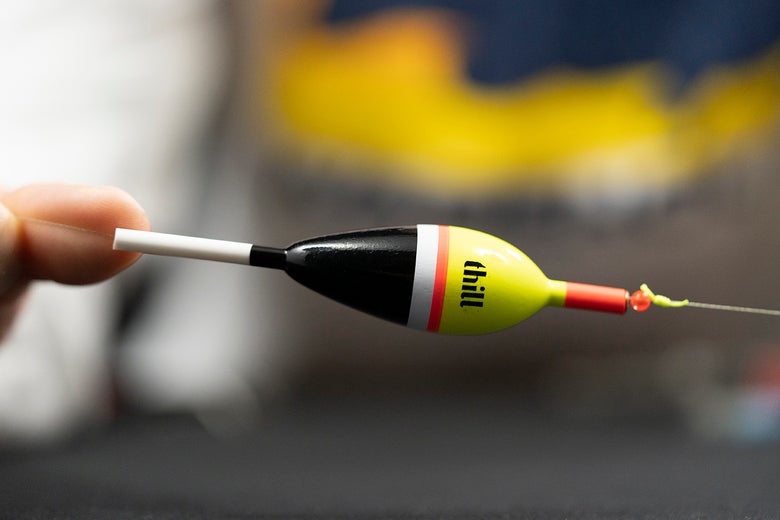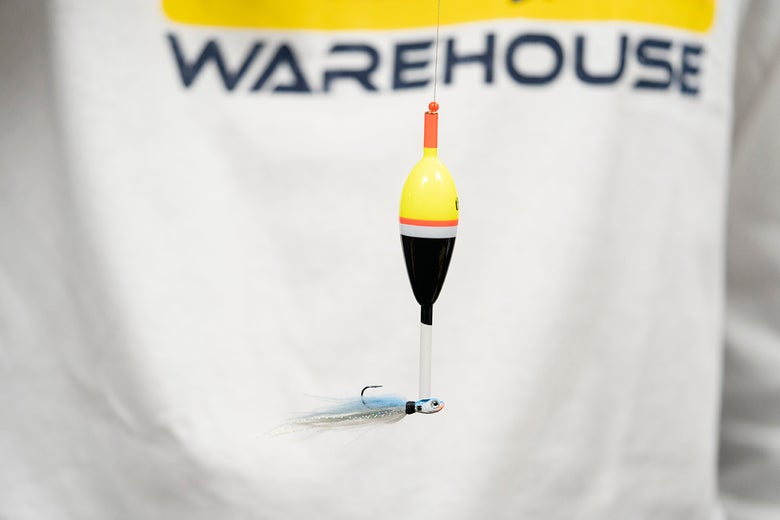How-To Rig the Float 'N' Fly
First made popular back East, the Float N Fly Rig is a productive way to target those hard-to-catch suspended fish or lethargic wintertime bass. Since its introduction, the technique has evolved and spread west throughout the country, growing from its original specialized bobbers and fixed leaders to a more versatile rig with variable leader lengths capable of reaching fish as deep as 30 feet or more. While still most effective in winter when the water temps slip into the chilly sub-50-degree range, it is now used year-round in a variety of fishing conditions.
What's Needed
Step One: Determine Leader Length
The first step in setting up the Float N Fly Rig is to determine the length needed for your leader line. This is done by identifying the depth at which the fish are holding, using either electronics, patterning the bass, or relying on familiarity with your local fishery. If those tools aren't available to you and you're unsure what depth to target, it’s always a smart idea to start with a leader the length of your rod, about 6- to 8-feet, and adjust accordingly from there.
Step Two: Tie Bobber Stop Knot
Once your leader length is determined, it is time to affix your bobber stop knot. These are offered in a pre-tied fashion with a slip-through design, but you can also tie your own using a nylon line if you prefer. Thread your leader line through the plastic straw and up to the desired length of your leader. This can be anywhere from 3- to 30-foot depending on where your fish are located and the time of year you are fishing. It’s important to note, slide the straw toward your tag end so you don’t have to cut the straw off if your straw has a very narrow tube that can't pass over your knot. Now simply tighten the knot and trim your tag ends, ensuring to leave a small portion of the tag end for re-tightening your knot should it come loose.
Step Three: Thread on Bead
Next, we are going to thread on the bead that protects your stopper knot while simultaneously preventing the bobber from managing to slip over your knot. Try using a brightly colored bead for an additional easy-to-see visual queue on when to set the hook.
Step Four: Add Slip Bobber
It’s now time to thread your slip bobber on the line. The bobber is a part of a free sliding system, hence the name slip bobber. This not only provides the freedom to utilize a very long leader without hindering casting performance, but it also lets the bobber slide all the way down to your finesse hair jig to offer additional weight that aids in making long casts with an otherwise ultra-light jig. It is important to select a bobber that corresponds with the weight of your jig. Too heavy of a bobber, and the lightweight jig will not pull the bobber to the vertical position which may result in missing subtle "lift bites."
Step Five: Tie on Finesse Jig
This next step involves tying on your preferred snack-size hair jig offering. Using your favorite connection knot, such as the Palomar or Improved Clinch knot, tie on your finesse hair jig to the end of your leader to complete the Float N Fly Rig.
A wildly productive solution to the challenge of targeting tight-lipped Winter bass, the Float N' Fly rig is sure to turn some of those otherwise lookers, into biters!














